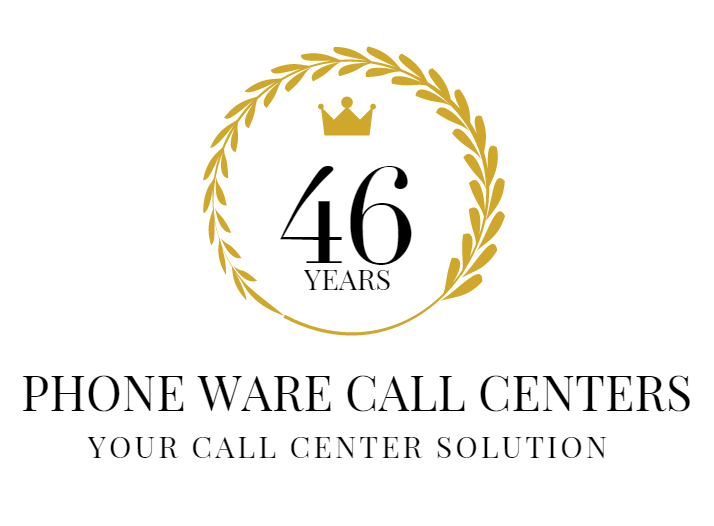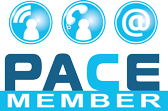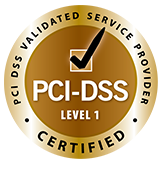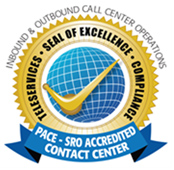I Need To Get A Call Center Tomorrow. What Do I Do?
Today’s business is stressed out.
Economic realities have created yet another new business model. It’s more necessary than ever to devise ways to stretch fewer resources into higher profits. Today’s mantra: “Do more with less.” And while balancing these opposing forces, customers, the engine driving profits, expect more for less. In exchange for their continuing business, they want the best product and service at the least cost. They want it fast, and they want to feel valued.
Where does a company find harmony?
The call center is a solution more and more organizations are implementing to drive the full customer experience. The call center allows organizations to become intimate with customers. It creates a bond deft at surviving blips on the radar screen, and connections that fuse relationships into cross-selling and up-selling opportunities. The call center is the central hub, a communications channel that links customer and organization together. Fortifying customer relationships and generating new business is a key practice to maximize market share and control brand integrity. Such partnerships are cultivated and reinforced by enhancing buyer interface, preserving benchmarked levels of service and cultivating shorter sales cycles. Yet, many business infrastructures are already at their limit in simply maintaining product and performance cycles.
Call centers are the proven tool in preserving, even growing sales, as well as gleaning an essential pipeline of market intelligence. So let’s say you’re already on board with the value of a call center for your company. What next? How can you hire a call center tomorrow? Where to begin? These five steps are central to taking a leap and adding a call center for your organization:
1. Step back and identify what the call center can do.
Think big picture. Shifting trends make it increasingly difficult for companies to maintain and evolve their corporate infrastructures. Internal resources are diverted to extinguish the flames of crises rather than proactively growing business. Accountability, speed and reliability are pressed to the side in keeping up with the daily demands of business.
The call center is a proactive instrument. It frees internal resources to concentrate on core competencies. From new sales to customer care to cancel and save programs, the call center has the flexibility to serve your organization 24 hours a day, 7 days a week, via the telephone and the Internet. It’s the difference between stellar performance and merely surviving.
Consider the fit and function of a call center in relation to the company’s marketing and sales on all platforms. Not only will this solidify a direction, but also open additional opportunities for a complete customer experience.
2. Crystallize your objectives.
Know, with clarity, what you want to accomplish with your call center. Identify performance metrics and benchmark goals. Let’s assume the essential qualities: Seamless interaction between call center staff and customers. A call center team that is both efficient and professional. A team that delivers an ultimate customer experience through proven processes. The ability to win new customers and keep the current crop.
Now, what are your core objectives to differentiate yourself from the competition? It may be an incremental increase in sales or market share. You may run a direct marketing campaign and need full-time support. Maybe it’s maximizing sales through cross-selling or up-selling. Call centers can also increase efficiency and accuracy, provide real time account management and marketing data, and implement consistent policies and procedures.
Begin with clearly defined objectives and build your call center with the intent of fulfilling those goals. Once objectives are defined, match goals to event driven timelines. Build in adequate ramp up time to implement the mechanics and delivery and hold to the objectives.
3. Out source or build an in house call center?
Think commitment. Does a long-term obligation make sense for your type of business? Consider whether the need is consistent enough to warrant the fixed cost of staff, equipment and training. Build in adequate time and budget for training, hiring and set-up, and remember that a good call center is far from turn key. In order not to add pain to the customer experience, a call center must stay up and running, consistently. Out sourced call centers easily accommodate seasonal demand by leveraging scalable operations while eliminating fixed costs that could adversely impact company profitability. Selecting the right service provider is critical. Look for proven technology, as well as capacity and reach that will accommodate business growth and take your organization to the next level. Outsource advantages include reduction of capital costs, acceleration of time to market and added capacity while leveraging costs. It’s a more flexible approach to implementing a call center and, certainly, an easy way to test market the validity of such an entity for your business. An outsourced agency may be good at one competency, such as outbound sales, or many, such as a blended mix of outbound, inbound, email and instant messaging.
Should you find yourself ready to contact an outside call center, the next step is devising a request for proposal (RFP). A strong RFP will outline your objectives, deliverables and time frames for accomplishment. By focusing on objectives, aspiring companies are able to apply their knowledge and expertise to devising solutions as to how to best accomplish the stated goals.
Research on the front end will smooth the process on the back end. Visit call center trade shows and conferences prior to making a final decision. There are also a number of industry trade magazines providing tips on the latest technology and standards.
4. Manage the process.
Once a call center has been selected, their success is still determined by how well they are integrated with your company. To be most successful, it’s critical to understand that the call center still must be managed in order to facilitate smooth integration between your company and theirs. The better the management, the better the supplying company will reflect your company in their service. And, whereas the center will be dealing with your customers, internalizing your corporate vision is mandatory, but not necessarily a natural extension of their offering.
In order to facilitate the most painless and quickest time to market, designate someone in your organization to orchestrate the selection and integration of the call center. If no one is available, or no one with experience in call centers, hire a consultant to spearhead the process. The time saved in using his/her knowledge and expertise will be well worth the investment in ramp up and reduce learning curve. Do not make the mistake of hiring or starting a call center and “letting it go”. Be on top of their performance, from script development to weekly monitoring.
5. Don’t forget the T word.
Technology will drive your call center environment. Twenty years ago, it was the people. Now, it is the people blended with the best usage of technology. All call centers should have a minimum standard. Inbound centers employ IVR (Integrated Voice Response) and ACD (Automatic Call Distribution) packages, and outbound centers drive calls with predictive dialer systems. But how the organization utilizes the complete CRM program makes the difference.
Consider tech solutions based on track record and proven performance. When making a decision on the technical component of a call center, consider worse case scenarios. Run these scenarios and devise action plans that address problems before they occur.
A good call center will have the technology and people to put your company ahead of the game, not behind where you started. Doing the groundwork ahead of time will ensure a smooth transition and integration.
Conclusion.
Many organizations have discovered their best bet to providing their customers with a full “customer experience” is through the usage of a best practices, state of the art call center. Leading edge companies thrive on providing the channel of communication that makes business easy for customers. The call center is one solid first step in the right direction.
































